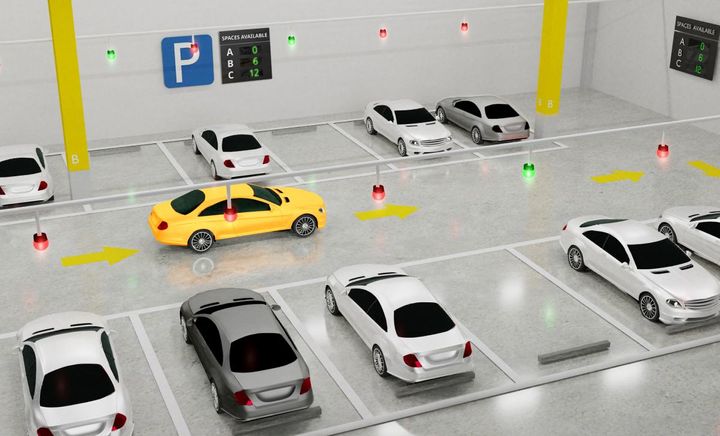Photo: Shutterstock
We may see fully self-parking cars before autonomous vehicles make their mass market debut.
Plenty of ink has been spilled over how smart vehicles will change (and are already changing) the way we drive. But the truth is, most cars spend 95% of their time parked. Even fleet vehicles, which spend a much bigger chunk of the day on the road, must still spend most of their time parked. While parking fleet vehicles in the company lot for the night is easy, out on the job and on the road, they still must find places to stop in the course of their duties. So as smart vehicle technology changes how we drive, it’s also useful to examine some of the ways it’s going to change how we park.
Of the smart vehicle innovations relevant to parking, it’d be difficult not to start with automated parking. Parktronic safety technology uses sensor and AI systems to detect and move into a parking space without any input from the driver. (Check out how it works in this video.) These systems make a huge difference by taking the stress and human error out of the parking process. Once the software is reliable enough to not require human supervision, self-parking will free up the driver to handle any bookkeeping, phone calls, or other business safely while the vehicle handles the parking process. As parking is less complex and dangerous than driving, we may see fully self-parking cars before autonomous vehicles make their mass market debut.
For fleet vehicles with access to their own parking lots, self-parking could efficiently automate the return and docking process. Having a garage or parking lot set up to interface with the vehicle, many advanced logistical, maneuvering, and space-saving innovations become available. Vehicles could be automatically directed to new spaces and even rearranged in the parking area to prioritize inspection, recharging, maintenance, and deployment. Without the need for a driver to get in and take the vehicle out of parking mode, units can be parked very close together, making more efficient and cost-effective use of space. Operational efficiency for a vehicle fleet could change dramatically and simply without having to worry about lot organization.
Car-to-car communications will also be a vital innovation in smart vehicles when it comes to parking. Not only will it allow fleet owners to better organize their parking layout and schedules, but other vehicles on the network throughout a city could communicate where spaces are vacant, or when they might become available. With a citywide network of interconnected vehicles, both internal to a fleet and external to other cars, parking in a city could become seamless as vehicles communicate non-stop.

New cars ready to ship in the port Rashid in Dubai, United Arab Emirates. Photo: Shutterstock
Smart vehicles could make parking so efficient on fleet lots that fleet owners could monetize their unused spaces as commercial parking, public charging stations or other uses. The whole process could be automated as smart vehicle technology promotes app integration, allowing smart parking apps to guide customers to maximize efficiency and convenience.
New innovations like smart parking, connected vehicles, integrated systems, and more are going to turn parking in the city into a streamlined and automated process, removing the stress from what was once the most onerous part of driving. Fleet owners and drivers will have to spend less time finding parking or dangerously double-parked as the technology will do the work. Scheduling and organization will become smoother as vehicles are always where they’re supposed to be. The further that smart vehicle technology advances, the easier that fleet ownership and deployment will become.
by Hari Sripathi
Source: https://www.fleetforward.com/






